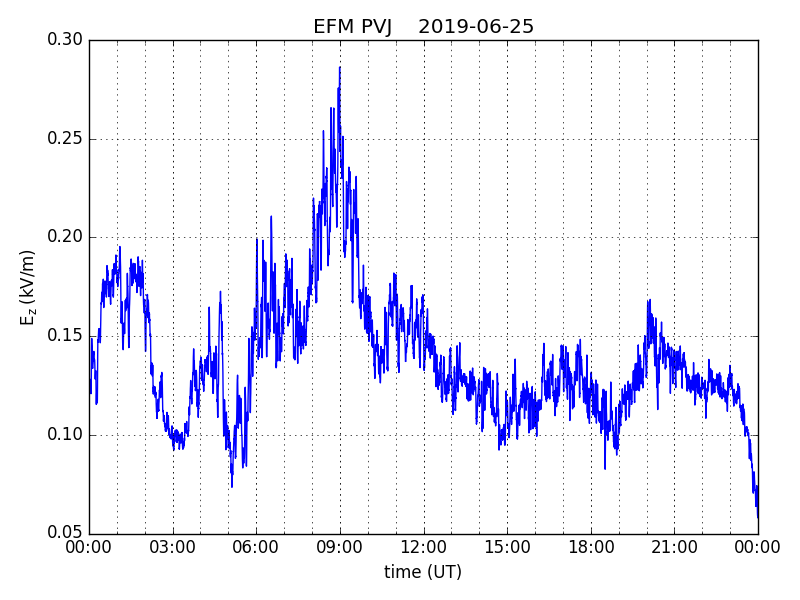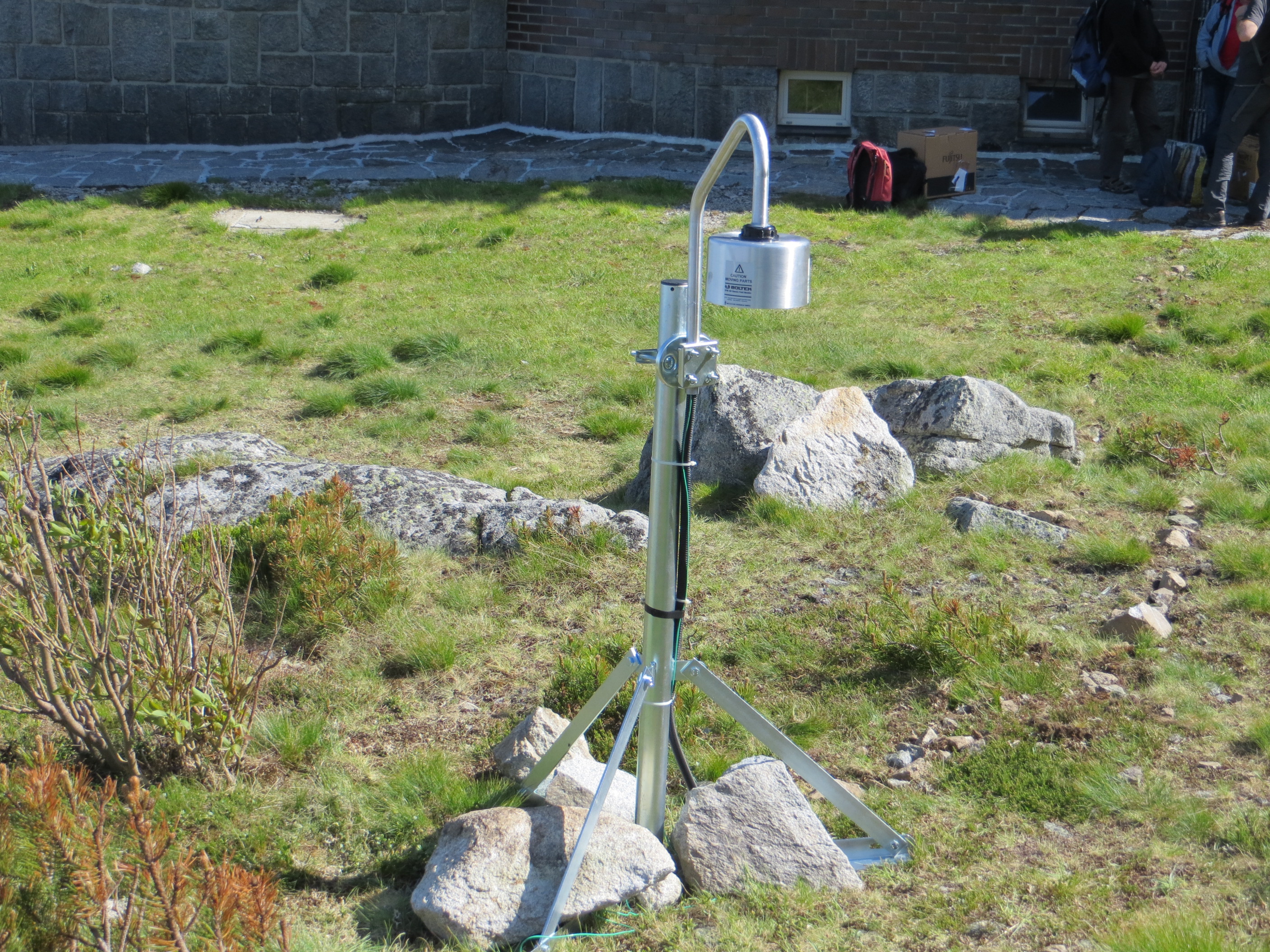The atmospheric electrostatic field is a consequence of a potential difference (around 250 kV) between the electrically conducting ionosphere and the Earth. This potential difference mainly results from charge separation in thunderclouds. Interplanetary magnetic field in the solar wind might also contribute to the potential difference at high latitudes. A typical value of electric field intensity in a free flat terrain at the ground during fair weather is about 100 V/m. Local weather – charged thunderclouds cause distinct changes of the local electric field.
The Department of Ionosphere and Aeronomy currently operates measurement of electrostatic field at the observatory of Panska Ves and at the seismic station of Studenec in the western part of the Czech Republic. Both these stations are included in the international network created in the frame of GLOCAEM project. Besides that, we operate in collaboration with the Institute of Experimental Physics of Slovak Academy of Sciences, measurement of electrostatic field in High Tatras at Lomnicky peak and Skalnaté Pleso. The Slovak measurements are mainly related to investigation of the influence of large values of atmospheric electric fields on the enhancements of secondary cosmic rays and gamma rays during thunderstorms.
Measurements of electrostatic field

Chum, J., Langer, R., Baše, J., Kollárik, M., Strhárský, I., Diendorfer, G., and Rusz, J. (2020), Significant enhancements of secondary cosmic rays and electric field at the high mountain peak of Lomnický Štít in High Tatras during thunderstorms, Earth, Planets and Space, 72:28, https://doi.org/10.1186/s40623-020-01155-9
Nicoll, K.A., Harrison, R.G., Barta, V., Bor, J., Brugge, R., Chillingarian, A., Chum, J., Georgoulias, A.K., Guha, A., Kourtidis, K., Kubicki, M., Mareev, E., Matthews, J., Mkrtchyan, H., Odzimek, A., Raulink, J.-P., Robert, D., Silva, H.G., Tacza, J., Yair, Y., Yaniv, R. (2019), A global atmospheric electricity monitoring network for climate and geophysical research, J. Atmos. Sol. Terr. Phys., 184, 18–29, https://doi.org/10.1016/j.jastp.2019.01.003
Kudela, K., Chum, J., Kollárik, M., Langer, R., Strhárský, I. & Baše, J. (2017), Correlations between secondary cosmic ray rates and strong electric fields at Lomnický štít, Journal of Geophysical Research: Atmospheres, 122, https://doi.org/10.1002/2016JD026439
Chum, J., G. Diendorfer, T. Šindelářová, J. Baše, and F. Hruška (2013), Infrasound pulses from lightning and electrostatic field changes: Observation and discussion, J. Geophys. Res. Atmos., 118, 10.653–10.664, doi:10.1002/jgrd.50805.

